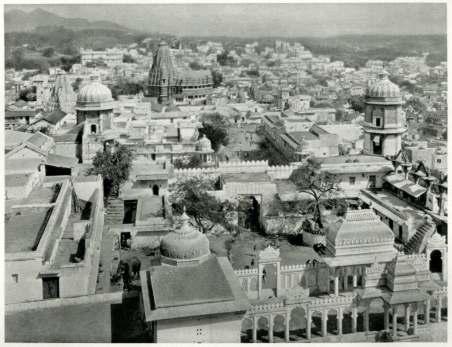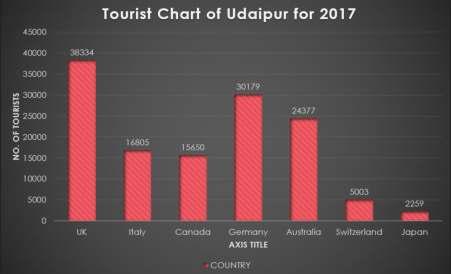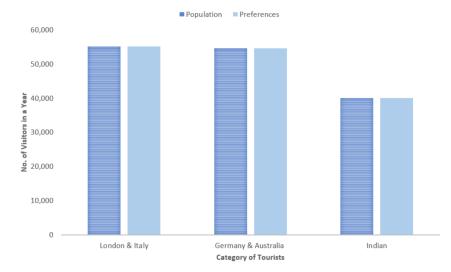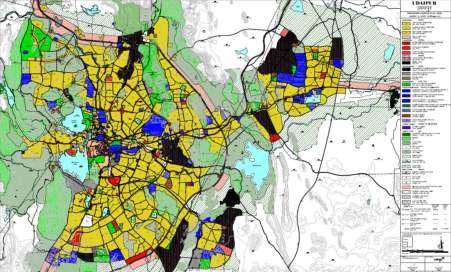
6 minute read
UNIT III: CONCLUDE
SITE SELECTION & ANALYSIS
3.1 Udaipur’s Background
Advertisement
The royal city of Udaipur has been the capital of Mewar for several centuries. The city has a legend behind its establishment. Once during his hunting expedition, Maharana Udai Singh met a holy sage in the Aravalli ranges. The sage directed the king to create a kingdom in this fertile valley, which would be protected by the high-rising Aravalli. Consequently, Maharana Udai Sing established Udaipur in 1553 AD.
Chittorgarh was the former capital of Mewar Kingdom and Maharana Udai Singh was the successor of the Sisodia clan, as say the descendants of the Sun God, who believed themselves to be the world’s oldest ruling family. The kings and the members of this dynasty were known to be the most powerful warrior clan in Rajasthan. Therefore, the capital was also moved to Udaipur from Chittorgarh, because of constant enemy attacks.
The Mughal Emperor attacked Chittor in the year 1568, and to keep away from his clutches, Udai Singh shifted his kingdom to Udaipur, which was a safer place. It was from that time that Udaipur got transformed into a modern city. Overlooking the aquamarine expanses of Lake Pichola stands the splendid City Palace - a marvel in granite and marble. Out of the original eleven gates of the Udaipur City, only five still remain. For the safety of the new capital the king built a wall with a length of 6 km with its main gates in it namely – Brahmpole, Ambapole, Hathipole, Udiapole, Chandpole, Surajpole. The area that resides in the wall is now commonly referred to as ‘The Old City’ or ‘The Walled City’. The British didn’t show their much interest in acquiring Udaipur because it was a mountainous region which made it dicult for their army to carry heavy armored horses and weapons. On the eastern side of the city, the periphery has a Surajpole or Sun Gate which is the main entrance to the city. Udaipur being the city of dawn, and a lovely land around the azure water lakes, hemmed in by the lush hills of the Aravalli hills. Udaipur is a fascinating mixture of sights, sounds and experiences. Its kaleidoscope of fairy-tale palaces, lakes, temples, gardens and narrow lanes strewn with stalls, carry the flavor of heroic past, epitomizing valor and chivalry.
3.2 Udaipur’s Geography

Udaipur lies in the shadows of the Aravalli Mountains, at a height of 577m. The walled city is surrounded by the city wall, on the eastern side of Lake Pichola. The train station and bus station are both in the vicinity of the old city. Udaipur is located at 24.58° N 73.68° E. Udaipur has an average elevation of 598 meters (1961 feet).
In the state of Rajasthan, and at the foothills of Aravalli hills is located Udaipur city. The city of lakes Udaipur lies in southern Rajasthan. Udaipur can cater its tourists with its enchanting view of the lakes, temples, cafes and restaurants, also sparkling view of the spotless white palaces, it's interesting historic background, and unique rural handicrafts. Though Udaipur has some fascinating features which can appear captivating for any outsider, the weather of Udaipur is not quite favourable all over the year. Therefore, the lakes encircling the city of Udaipur make the climate somewhat comfortable and pleasant during the summer season. The summer is very hot and rainfall is scarce which is not favourable for a pleasant holiday in Udaipur.
3.3 Udaipur as a Tourist Destination

Udaipur is one of the most popular cities in Rajasthan, and is quite famous for its lakes and palaces. Also, known as the ‘Jewel of Mewar’, in 1553 this city was founded by Maharaja Udai Signh, on the banks of Lake Pichola. Udaipur is claimed as one of the most romantic cities of the world and mini Venice.
Udaipur today, it is a perfect mixture of old-world charm and contemporary attractions. Every year, in abundance tourists visit the ‘City of Lakes’ Udaipur, by getting enchanted from its vibrant culture and traditional customs. It is still inhabited by the local people of Bhil tribe, so we can still see people dressed in traditional Ghagra-Choli, laden with huge silver jewellery. People of all dierent religion- Hinduism, Islam, Sikhism and Christianity reside here. The modern city of Udaipur is a vivid hub of social- cultural activities, art, music and folk dance. While living in Udaipur one can see both kinds of people- those following their age-old traditions and also those who have adopted a modern style of living. The city plays as a host to a number of fairs and festivals of the country. Udaipur Stands Second in The Number of Foreign Tourists in Rajasthan.
As compared to 2016 annual chart of tourist ratio in city, there was an increase of 10 percent in data of foreign tourists. As per the tourism department, tourists from French and America have increased in numbers in 2017. Whereas in Rajasthan, tourists from French outnumbered all other tourists in 2017. On number three we have American tourists in the increasing list of tourists. Consequently, in this 7th year, it is growth for Udaipur that foreign tourist numbers were seen going high. Udaipur stands at number second in the year 2017 after Jaipur which stands with the highest number of foreign tourists. Jaipur with a number of 9,50,991 foreign tourists whereas Udaipur had 3,47,542 foreign tourists. Jodhpur stood 3rd with 1,69,264 foreign tourists.

3.4 SWOT Analysis
This study is about the phenomenon of urban planning processes. The methodological approach is qualitative research. The data collection relies on live case studies, interviews and a time graph analysis of dierent places at dierent peak time. The time graph along with age graph are based on their experience of age or participation in the type of activities, involvement in dierent urban spaces, footfall of dierent spaces, with the analysis of interest and opposition against the urban project. The theoretical literature and the planning typology are analysed through the theoretical framework of past, present and future scope.
This process resulted in identifying the Opportunities, Threats, Strengths and Weaknesses of each case study conducted. Which in turn resulted in the conclusion that, based on the study’s main findings and recommendations.
As per the live case studies and analysing interests of local as well as tourist public in Udaipur City, I was able to conclude that the tourists especially like to be in the Walled City area and are fond of exploring the traditional, heritage architecture & culture of the city. Instead, there is a bunch of local residents of Udaipur City who consider accessibility as a priority and then the “View”.
Also, there is another graph to show that annually in the city of Lakes more than 2 lacs people come and go, and all have their own preferences, likings, and comfortability through which they explore the Udaipur City.

respective countries and preferences mean that where they choose to accommodate (i.e., choice of hotels) themselves for a stay in the city.

This particular table here exhibits that how being at the maximum population i.e., London and Italy tourists arrive in city, and prefer the Walled City for their accommodation and exploration. Tourist from Australia and Germany will prioritize access first and then view. Here, of course they will be in the vicinity to Old city but will not choose a hotel where accessibility is an issue. Moving on to Indian Tourists, which is majorly from Gujarat & Kolkata, they have a dierent taste from foreign tourists. India, the whole country itself celebrates this traditional architecture and inherits the old ‘Gali’ or let’s say narrow passage concept in almost all Indian States, so for them the Walled City is not that something really WOWS!
So, they find resorts or a hotel at outskirts from Walled city because they don’t want to get into the hustle bustle and crowded streets with jams, animals and shops on both hands. Rather they try to focus on serenity while booking their accommodations.
Urban open space - both magnitude and spatial arrangement - is critical to urban living. As the availability of open space, distribution and accessibility are a major concern for cities. Open space is a necessity and not a luxury.
Due to ongoing urbanisation trend worldwide, the distance between city inhabitants and nature is increasing. Urban greenery is one of the ways to bridge this gap between people and nature. With the growth of urban sprawl or the migration the increase in density is one of the reasons for underdevelopment of urban greenery sector. Without careful planning, cities will be stressed with environmental challenges.
As we have found out in the case studies that the geography of all these urban spaces is more towards western side of Udaipur city, as compared to it as a whole. Open space is a basic type of land use along with residential, commercial, industrial, transportation etc. Other than open space, the rest are given due importance for progress and it is neglected because it caters to natural, recreational and cultural needs that are intangible.







